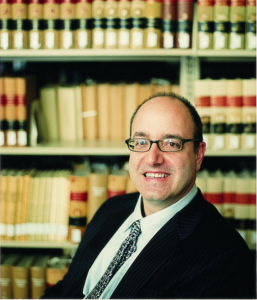Legal Education Today
At their best, lawyers are more than just problem spotters; they are problem solvers. But today’s problems, whether in the public or private sector, require lawyers to possess skills beyond those covered by the traditional legal curriculum. Lawyers today— and, more importantly, tomorrow—must understand their clients’ needs and interests in ways that can be learned only from within other disciplines, whether that means business, engineering, medicine, science, politics, economics, or a myriad of other possibilities. Lawyers must be versed in international issues, sensitive to the difference culture makes, and aware of the problem of integrating law in a global context. And they must be taught to see how these complex new realities play out in real-world settings. As educators, we have a responsibility to recognize the changing needs of the profession and adapt our curriculum accordingly. As a leader in legal education, Stanford Law School can and should set the standard for intelligent innovation.
The Stanford Challenge is a universitywide effort meant to draw on strengths from every corner of the university and to give us the means to build a program for the 21st century and beyond.

Our goal in this campaign is nothing less than to transform legal education to better prepare our students for the changing world in which they will practice. This means preserving traditional strengths while enlarging and enriching our program with new interdisciplinary, international, and clinical opportunities. Teaching students to “think like lawyers” remains our first and foremost obligation. But once students are on the road to mastering this skill, we must help them to begin integrating it into the kinds of tasks they will face as professionals. The upper-level law school years must become a richer, more intellectually diverse time in which students complete their basic legal training while learning how to think like— and with—their future clients and co-workers. Knowing how to analyze doctrine is indispensable. But so, too, is knowing how to use and evaluate that knowledge alongside the non-legal aspects of a problem. So is knowing how to work with others in teams.
The law school faculty has for some time been actively developing innovative new courses, clinics, and programs to meet such challenges. These include everything from sophisticated courses in engineering a complex business deal to simulation classes that team law students with students from the sciences to study the problem of translating complex ideas into a courtroom or policymaking setting. We have created advanced workshops in negotiation, an international clinic, and a host of other new forms of learning. We have modified our calendar to integrate better with the larger university, established more than a dozen new joint degree programs, and devised a program in public policy analysis that draws resources from across the university. We are in the process of constructing multidisciplinary curricula for students with diverse career interests. Part of our unique opportunity comes from being in a university that is itself unique. Stanford stands out even among the world’s great research institutions for the breadth and consistency of its excellence across disciplines. Whether we are talking law, business, medicine, engineering, computer sciences, biology, or the social sciences, Stanford is consistently ranked at the top—a pattern of excellence we can put to use for the benefit of students and faculty.
If we are, however, fully to realize these ambitious goals, the law school must also build and expand. In order to attract the most talented students, we must build new student housing and bolster the financial aid we offer with fellowships and scholarships and a more generous public service loan repayment program. To secure the best scholars and practitioners as members of our faculty, we must build new academic space, enhance our clinical and research programs, and expand our faculty through new endowed professorships. With your help, we can raise the quality of legal education at Stanford to a new level and in so doing establish a model program that law schools everywhere will follow.
As you read through this issue of Stanford Lawyer, I hope you find yourself sharing my enthusiasm for the law school’s new programs and evolving curriculum, and my excitement about our potential to do more.
